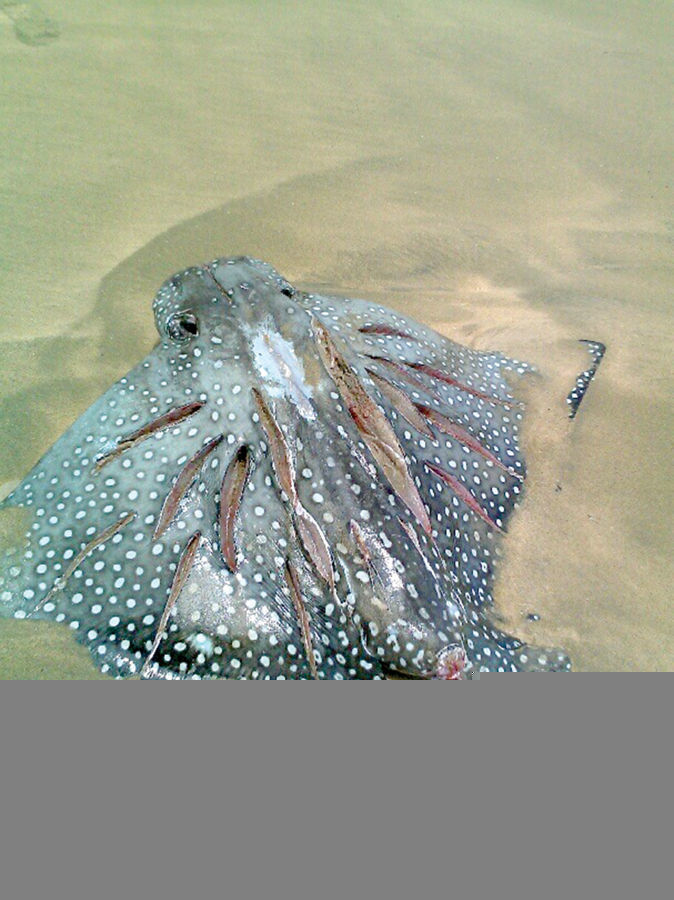Jose Villarin planned to snorkel when he arrived at Lydgate Park under sunny skies Saturday morning. But the carcass of a washed-up spotted eagle ray, slashed in more than a dozen places, kept him out of the water. “It had two stab
Jose Villarin planned to snorkel when he arrived at Lydgate Park under sunny skies Saturday morning.
But the carcass of a washed-up spotted eagle ray, slashed in more than a dozen places, kept him out of the water.
“It had two stab wounds like somebody stabbed it to death, and when I flipped it over there were all these gashes like someone had just stabbed it and stabbed it,” said Villarin, a 50-year-old Kapaa resident.
The ray’s tail had also been chopped off.
Alarmed by the gruesome finding, he pulled out his camera phone and took photographs of the mutilated carcass, estimated to be three-feet by three-feet. He wanted proof. And he wanted answers.
“It’s abusing an animal for no reason,” he said. “It’s not right.”
Authorities were not alerted to the incident, and Villarin said eventually the dead ray washed back out to sea. But on Tuesday, Villarin contacted a reporter in hopes of finding out who committed what appears to be an intentional, brutal killing.
It is a petty misdemeanor punishable by $100 to kill, harm or capture a spotted eagle ray, manta ray, broad stingray, pelagic stingray and Hawaiian stingray. Violation of this state statue is punishable by $200 for a second offense and $500 for a third and any subsequent offenses.
A spokesperson from the Department of Land and Natural Resources said the agency was not notified of the incident until contacted by a reporter Tuesday, but staff members who reviewed the photographs taken by Villarin said the varying angles and uniformity of the cuts on the body and the cut-off tail suggest knife cuts.
It’s uncommon to find a dead ray on the beach or floating in the water, according to Deborah Ward, DLNR spokeswoman.
In October 2013, DLNR received a report of a live manta ray with a 4- to 6-foot spear through its wing at the north end of the cleaning station at Veto’s Reef near Mahaiula Bay in Kona.
In a similar incident reported in March 2008, a spotted eagle ray was found dead floating in Honokohau Harbor in Kona with a spear shaft penetrating its body. The ray had been decomposing for a day or two, and was probably speared just outside of the harbor, an area heavily used by recreational divers and snorkelers, Ward said in an email.
While manta rays are protected throughout the islands, eagle rays are protected in West Hawaii only.


